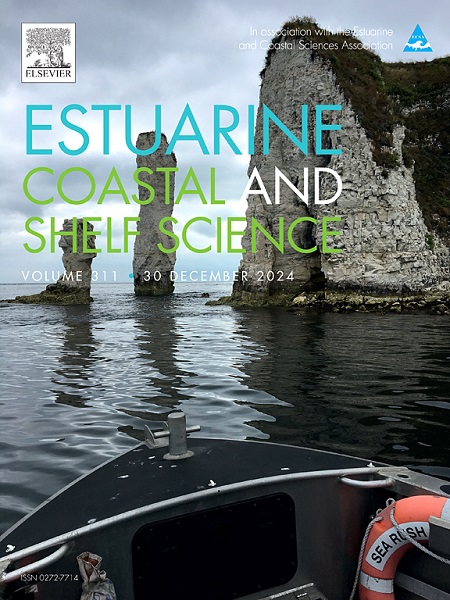Ontogenic shift of feeding habit in Manila clam Ruditapes philippinarum after settlement revealed by diatom specific DNA-metabarcoding diet analysis
IF 2.6
3区 地球科学
Q1 MARINE & FRESHWATER BIOLOGY
引用次数: 0
Abstract
Clarifying the feeding ecology of each life stage of the Manila clam is essential for an accurate assessment of the food environment for this species. However, information on the feeding habit of clams remains insufficient, and also the morphological and ecological characteristics of the diverse microalgal species in the coastal zone on which clams feed remains largely unknown. In this study, we investigated the ontogenic change in feeding habit of clams in natural waters based on chloroplast-targeting DNA metabarcoding. Samples of clams (spats, juveniles, adults), seawater and sediment were collected in three regions in Japan. DNA was extracted from each sample and PCR and DNA metabarcoding were performed using diatom-specific universal primers for chloroplasts (rbcL), after comparison with the universal primer for microalgae (psbA). Then, we calculated compositions of diatom genera in each sample, proportions of planktonic and benthic diatoms in gut contents of clams and similarities of diatom genera compositions between each sample. High proportions of benthic diatoms tended to be detected from spats and small juveniles with a shell length less than 2 mm. On the other hand, high proportions of planktonic diatoms were detected from gut contents of juveniles and adults with a shell length greater than 8 mm, and their composition was similar to that of diatoms in the ambient seawater. This diet shift may be attributed to the developmental completion of the inhalant siphon for filter-feeding at around 2 mm in shell length. From these results, the life history stages of the Manila clam after settlement can be divide into three phases: pedal-feeding phase from the settlement to 2 mm shell length, transition phase from 2 to 8 mm and filter-feeding phase larger than 8 mm.
硅藻特异性dna -元条形码饮食分析揭示了菲律宾马尼拉蛤定居后摄食习惯的发生转变
澄清马尼拉蛤每个生命阶段的摄食生态对于准确评估该物种的食物环境至关重要。然而,关于蛤蜊摄食习性的信息仍然不足,而且对蛤蜊赖以为生的沿海地区各种微藻的形态和生态特征也知之甚少。本研究利用叶绿体靶向DNA元条形码技术研究了自然水域中蛤蜊摄食习性的发生变化。在日本的三个地区收集了蛤(幼蛤、幼蛤、成年蛤)、海水和沉积物的样本。每个样品提取DNA,与微藻通用引物(psbA)比较后,使用硅藻叶绿体通用引物(rbcL)进行PCR和DNA元条形码编码。然后,我们计算了每个样品中硅藻属的组成,浮游硅藻和底栖硅藻在蛤蜊肠道内容物中的比例以及每个样品中硅藻属组成的相似性。高比例的底栖硅藻倾向于从贝壳长度小于2毫米的小幼体中检测到。另一方面,壳长大于8 mm的幼鱼和成鱼肠道内容物中浮游硅藻的比例较高,其组成与环境海水中的硅藻相似。这种饮食的转变可能是由于吸入式虹吸管在壳长约2毫米时完成了过滤进食的发育。综上所述,马尼拉蛤沉降后的生活史阶段可划分为沉降至壳长2 mm的蹬食阶段、壳长2 ~ 8 mm的过渡阶段和大于8 mm的滤食阶段。
本文章由计算机程序翻译,如有差异,请以英文原文为准。
求助全文
约1分钟内获得全文
求助全文
来源期刊
CiteScore
5.60
自引率
7.10%
发文量
374
审稿时长
9 months
期刊介绍:
Estuarine, Coastal and Shelf Science is an international multidisciplinary journal devoted to the analysis of saline water phenomena ranging from the outer edge of the continental shelf to the upper limits of the tidal zone. The journal provides a unique forum, unifying the multidisciplinary approaches to the study of the oceanography of estuaries, coastal zones, and continental shelf seas. It features original research papers, review papers and short communications treating such disciplines as zoology, botany, geology, sedimentology, physical oceanography.

 求助内容:
求助内容: 应助结果提醒方式:
应助结果提醒方式:


